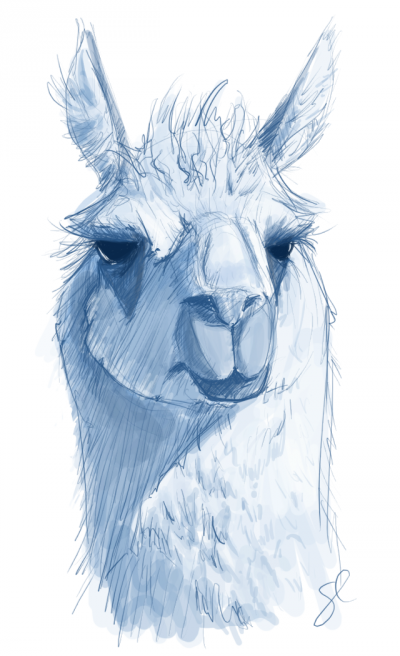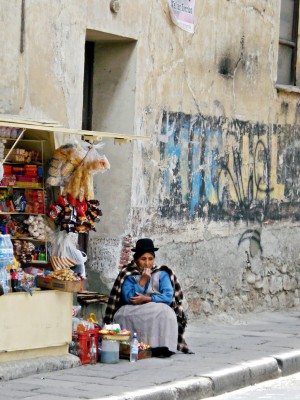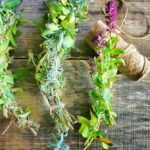One of my favorite medical books is an ethnography titled Drum and Stethoscope: Integrating Ethnomedicine and Biomedicine in Bolivia by Joseph W. Bastien. It’s a fascinating read and definitely one that all students and explorers of ethnomedicine should pick up.
If you’re looking to expand your ethnographic, alternative medicine, or biomedical library, then Drum and Stethoscope is a wonderful addition to your collection. Here’s a little more of what I learned from this excellent ethnographic study.
Drum and Stethoscope in Bolivia
If you’re exploring ethnic studies or ethnomedicine, then Drum and Stethoscope is an excellent introductory text on Latin America. The book is also appropriate for individuals experienced in ethnomedicine who want a deeper dive into Bolivia or those looking at how biomedicine and native healing practices can work in tandem.
Author Joseph W. Bastien was a fascinating man. He authored the book to capture many of his experiences in Bolivia. Drum and Stethoscope was published in 1992 by the University of Utah Press and is a brief but dense read at around 250 pages.
Bastien spent several years as a priest, ministering to the people of La Paz, Bolivia, in the mid-1960s. During his time in Bolivia, he started a youth center and worked with prisoners in the Panopticon jail. He worked closely with the Aymara, an indigenous people of Bolivia in Peñas, an Altiplano or “high plain” region. He learned the Aymara language, and the experience would continue to shape his career.
After Bastien returned to the United States, he studied Andean Anthropology at Cornell University, which included fieldwork with the Qollahuayas, a native Andean people, exploring the relationship of their rituals to agricultural activity and social institutions. After completing his Ph.D., he moved into teaching, eventually becoming the Director of Anthropology at the University of Texas at Arlington and a Distinguished Scholar Professor. He was awarded La Cruz Andina de Oro by the Bolivian government for his extensive research, writing, and work for the welfare of Bolivians.
Bastien completed many works, including Health in the Andes, Healers of the Andes: Kallawaya Herbalists and Their Medicinal Plants, and Kiss of Death: Chaga’s Disease in the Americas. Drum and Stethoscope focuses on the Bolivian people and his work from 1963 amongst the Amayran people.
The book explores his time spent with Amayran’s famous Kallawaya diviners, traveling herbalists, and native medicine practitioners and their integration with Western medical professionals. Drum and Stethoscope explores cultural factors for improving the health of Bolivian people by incorporating native beliefs, rituals, and medicinal plants (biomedicine) into Western medical approaches.
Because Bastien worked in rural and semi-urban regions in Bolivia, his work includes multiple groups of indigenous communities and urban communities, blending the ancient and modern. He explores how they interact with each other and uses it as the basis for a comparative study of ethnomedical practices and traditional western biomedicine.

Inside Drum and Stethoscope
As with many anthropological and ethnographic studies, Bastian uses standard methods for analysis, including chain sampling—locating and building a relationship with an informed community representative who then identifies other representatives in the group. In addition, Bastien uses participant observation, where he participates in the daily life and rituals of the Bolivian people.
Throughout the book, he interviews shamans, herbalists, and other practitioners of Bolivian ethnomedicine. He used qualitative data throughout the study and quantitative data to capture the impacts of disease, infant mortality, and discoveries of hospital and government research. Bastian compares and contrasts the beliefs, native medical practices, and rituals of the rural indigenous and urban Bolivians.
Throughout the text of Drum and Stethoscope, Bastian explores and juxtaposes the data on ethnomedicine and the relationship to practitioners of biomedicine. He uses the exploration as a way to develop ideas on how the two views can correspond and overlap to improve the lives of Bolivian people and the potential for a broader application throughout other populations.
As with many ethnographical studies, some ethical issues and challenges can present themselves. After all, as outside researchers, it’s difficult to remain objective and avoid viewing and exploring native practices through our own lens. Biomedicine can disregard native healers. The book explores this conundrum, and Bastien explains how he was cognizant of these challenges.
For example, some ethnomedical practitioners use techniques that may be potentially dangerous, such as using a sheet as a trampoline, launching pregnant women in the air to turn an unborn child in the correct birthing direction. Other practices, like sacrificing animals to appease earth spirits, may seem primitive or confusing to outside researchers. These methods challenge the perception of Western culture and the scientific community to continue their sense of cultural relativity in light of potentially harmful, dangerous, or (what we may perceive as) cruel practices.
Bastien used a straightforward approach to present the information to the reader without bias. In the case of dangerous practices, he offered recommendations and factual reasons why we should avoid these. In most situations involving animal sacrifice, Bastien adopted the role of participant observer. Bastian also avoided the topic of the political and racial tensions between Bolivian groups, as his focus was on the tensions between medical practitioners and ethnomedical practices.
Findings from Drum and Stethoscope
Throughout the book, Bastien uses a variety of techniques to get to know the Bolivian culture. His methods were consensual, respectful, and mindful of the relationships in the community. He looked at aspects of spiritual practice that are included in Bolivian ethnomedicine.
Biomedicine or western medicine often focuses on the ailment—diagnoses, and treatment of the body through medical intervention, whether pharmaceutical or surgical. However, Bastien found that some Bolivians felt this approach involved negative energy; the hospital environment was too cold and sterile, and doctors and nurses were impersonal.
As a result, many of them preferred and sought the help of shamans, herbalists, or midwives. These traditional practitioners seemed to be more aligned with personal or family problems. In addition, people felt cultural respect from the ethnomedical practitioners, who responded well to them.
Many ethnomedical practitioners sent patients on to biomedical clinics if they couldn’t resolve the issue independently. Unfortunately, the reverse almost never happened—biomedical nurses and doctors rarely, if ever, sent patients to see ethnomedical practitioners. Over time, the relationship between the two factions eroded to the detriment of the patients.
Bastien highlights the contrast between the high degree of acceptance of ethnomedicine in Bolivia and the higher rates of successful biomedical treatments. He helps the reader understand the potential applications of combining biomedicine’s efficacy with ethnomedicine’s personalization and energy. Similar to how holistic health and naturopathic medicine can work hand-in-hand with pharmaceutical and biomedical approaches to care in the United States.

My Recommendation for Drum and Stethoscope
One aspect I really admired about this book is that Joseph W. Bastien captured the humanity and nuances of the Bolivian people. Throughout the book, he describes them not just as people who were ill but rather as multi-dimensional people affected by their feelings, interpersonal relationships, belief systems, and role in their community. It’s something that biomedicine often overlooks, and it can be detrimental to patients throughout the globe.
Many ancient medical interventions were based on science and offered positive results. People turned to these treatments because they were effective and still have value. When we look at holistic medicine today, we can see the benefits of treating the entire person—their mental, physical, and even spiritual health.
Look at nutrition, for example. In “modern medicine,” we are starting to recognize the benefits of dietary approaches to illness. Something as seemingly simple as taking a daily probiotic like Melaleuca’s Florify can prevent and improve a variety of digestive issues, balance our system, and help us have more energy and stamina. As a result, we can actually head off problems before they escalate and require a pharmaceutical approach.
Other practices like yoga, which bring spiritual and physical health together, are becoming more widely accepted as appropriate treatments for stress. Often when we’re in balance physically, spiritually, and mentally, we can cope with stress and improve our sleep, digestion, immunity, and other issues.
Because some traditional ethnomedical approaches to care may seem unfamiliar or even odd to us, it doesn’t necessarily mean that there aren’t many benefits to integrating some of these approaches into biomedicine.
Bastien explores the example of shamanism. A shaman adopts the multifaceted role of spiritual leader and healer. These practitioners explore a sick person’s social relationships, personal feelings, spirituality, ties to ancestors, sorcery, eating habits, and other problems in the body. We know today that illness can align with and affect many of these areas of our lives.
Healing a person may involve finding the root cause of the ailment, whether physical or otherwise, and addressing it first and foremost. Biomedicine in Western society can benefit by using this approach to help our own healing techniques become more long-lasting and effective.
I would recommend this ethnography to anyone interested in understanding more about traditional ethnomedical practices and holistic treatments. It’s a great study to help you get a feel for the study of anthropology and ethnography. Drum and Stethoscope would be a welcome addition to anyone’s holistic healing library.
Want to learn more about holistic approaches? Don’t miss:









Comments & Reviews
My family all the time say that I am killing my time here
at net, except I know I am getting familiarity daily by reading
such good articles.
Thank you!
I appreciate your comment on my ethnography review. It’s a common theme to think surfing the web can lead one to finding a lot of misinformation or “junk”; however, it is my goal as author and founder of Eupterra to add real, factual information that is relevant to people’s lives, naturally 😉
I am grateful for you letting me know how you feel, and if it helps, you are welcome to invite your family to visit this site. I am sure they and yourself may get a good read out of my other ethnic literary critique: Monsters of Modernity – Dracula. Find it on here if you like!
Hey there! Do you use Twitter? I’d like to follow you if that would be ok.
I’m absolutely enjoying your blog and look forward to new posts.